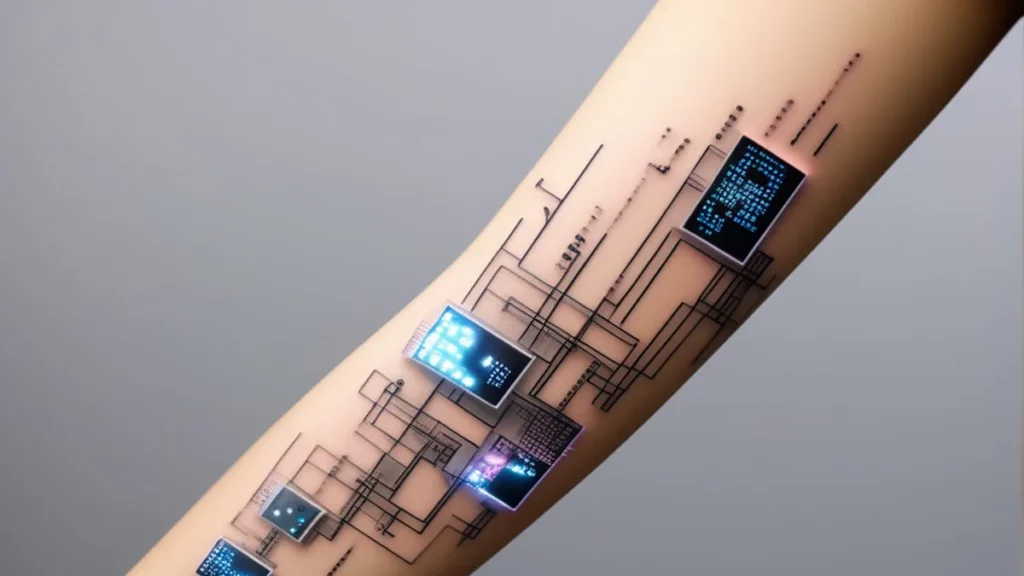Key Takeaways
- Apple has filed two patents to track body movements and enhance fitness and health monitoring.
- The first patent is designed to detect posture changes using existing mobile devices, while the second patent aims to detect every movement of the body using multiple wearable devices.
- The technology can be used to generate detailed insights into a user's movements and improve health monitoring, including glucose tracking and fall detection.
- The technology can also be used to alert visually-impaired people to obstacles and teach proper workout regimes, sport techniques, and dance activities.
- Privacy concerns are addressed in the patent applications, assuming that entities responsible for data collection will comply with established privacy policies.
Apple has recently filed two separate patents that aim to track every movement of the body to improve fitness and health monitoring.
The first patent, “Posture Transition Detection and Classification Using Linked Biomechanical Model,” was filed in September 2021 and was revealed recently.
The patent aims to detect posture changes and uses a combination of devices to determine the user’s relative position and attitude, such as whether the user’s head is turning while the torso is stationary or vice versa.
The second patent, “Full Body Pose Estimation Through Feature Extraction from Multiple Wearable Devices,” filed in 2022, aims to detect all body movements using practically all wearable devices, including smartwatches and ear devices, to create a more accurate full body skeletal model.
Tracking Posture and Movement
The earlier patent aims to detect changes in posture, whether the user is sitting or standing or transitioning between the two.
It utilizes existing mobile devices, including motion sensors, to provide motion data such as acceleration and rotation rate to detect a user’s physical posture changes.
It can also determine if the user is in a vehicle or alert the user to incoming obstacles. Additionally, this technology could be a part of Apple’s long-awaited mixed reality headset, which is reportedly facing production and technical delays.
The second patent aims to detect every movement of the body using all wearable devices that include inertial sensors.
These sensors can sense the motion of the user and capture a user’s arm motion, which can then be used by fitness applications to compute various fitness metrics, such as the amount of calories burned during exercise.
The patent proposes using multiple cameras and inertial sensors placed at different locations of the user’s body, combined with depth data for the full body to generate a more accurate three-dimensional skeletal model that can provide detailed insights into a user’s movements.
Apple already seems positioned to add more health-related features to its device lineup, including glucose tracking in its smartwatches.

Improving Fitness and Health Monitoring
The first patent specifically mentions using the technology for Apple’s Spatial Audio applications, where motion from the headset could feed into the sound positioning software.
The system should automatically switch from its sitting and stationary mode to a walking mode when the user wears a headset while sitting at a table and stands up to walk away.
The technology can also detect motion and alert visually-impaired people walking through the real world to obstacles.
The second patent mentions how the movement tracking tech can be used by a fitness application to determine specific metrics like calories burned, as well as additional health monitoring use cases.
The technology can also detect if a person has fallen down or is sick, and autonomously teach proper workout regimes, sport techniques, and dance activities.
Privacy Concerns
Each of the two patent applications includes a standard section about privacy, assuming that “entities responsible” for such data collection “will comply with well-established privacy policies.”
Apple already seems positioned to add more health-related features to its device lineup, including glucose tracking in its smartwatches.
Conclusion
Apple’s latest patents aim to track every movement of the body, enabling a more accurate full body skeletal model that can provide detailed insights into a user’s movements, and improve fitness and health monitoring.
The technology can detect posture changes, alert visually-impaired people walking through the real world to obstacles, and autonomously teach proper workout regimes, sport techniques, and dance activities.
While the technology may raise privacy concerns, Apple assumes that entities responsible for data collection will comply with well-established privacy policies.







